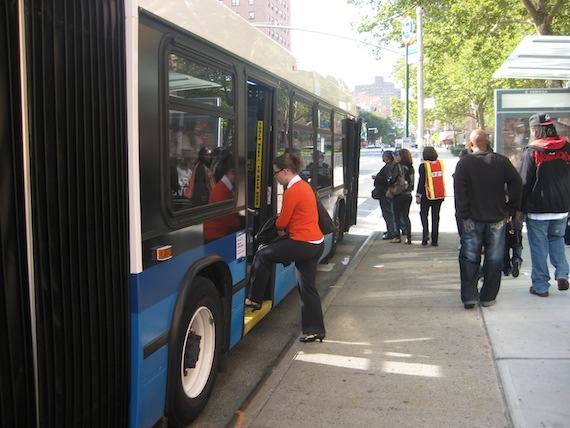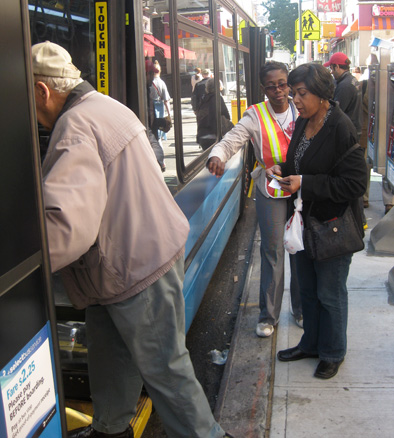
Select Bus Service is up and running along First and Second Avenues, bringing rapid bus enhancements to the second busiest bus line in New York City. Though riders will need some time to adjust to the new system, many are already praising the faster service.
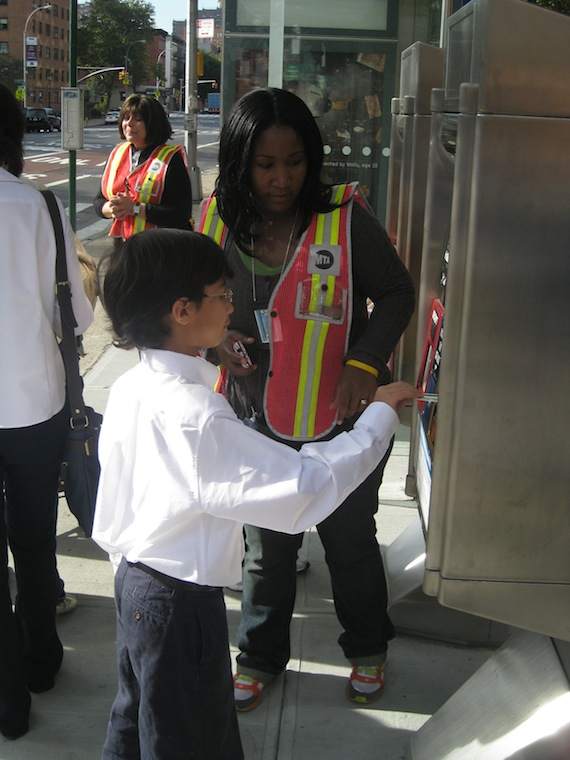
The thousands of bus riders along Manhattan's East Side were surely in need of some relief. Though the M15 bus was one of the highest-ridership routes in the country, with 16,541,900 annual rides, it was also one of the slowest in New York City, moving at an average speed of less than six miles per hour. The lack of a decent transit option east of Lexington Avenue also contributes to intense and uncomfortable crowding on the 4, 5, and 6 subway lines.
With the SBS improvements, this critical route should run far more smoothly. Buses will spend less time stopped and more time in motion, thanks to off-board fare collection and three-door loading and unloading. During peak hours, passengers will speed through traffic in camera-enforced bus lanes. New York's first SBS route, along Fordham Road, improved bus speeds by 20 percent and ridership by 30 percent, according to MTA chief Jay Walder.
First and Second Avenue could see similar gains. On the first weekday of service, at the outset of what figures to be an initial period of adjustment, riders were already noticing the difference.
"It's definitely faster. You don't have to wait in line for people to find their MetroCard," explained Monica Sunwoo, who was headed to work in Midtown.
"It feels a little bit faster," judged a rider named Miriam, who was traveling from 116th Street to 68th, "especially getting to enter all the doors."
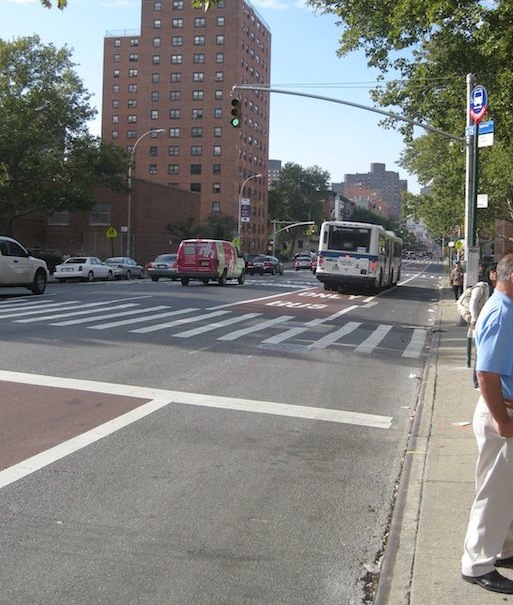
Where the lanes were marked with paint, they remained largely clear of obstructions. I saw only one motorist drive or park in the terracotta bus lane over a roughly fifteen minute period, as well as a dozen or so cyclists.
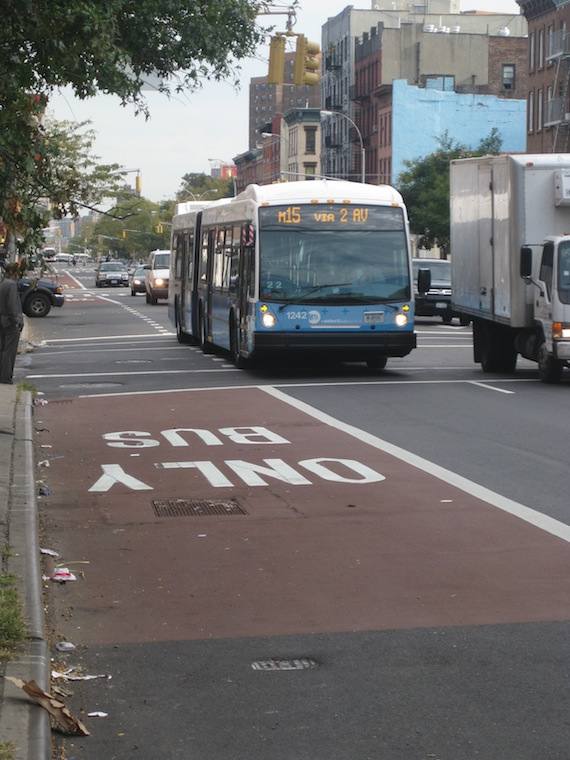
With changes as significant as the SBS improvements affecting several miles of streets and tens of thousands of daily riders, there are bound to be some kinks to work out at first, both in terms of the way the service operates and the way passengers use the service. Today there was a recurring enforcement problem where the bus lane paint is interrupted before right turns. In those areas, cars are allowed to pull in next to the curb to turn right. However, the lack of red paint appeared to signal to motorists that this was an unrestricted area. A number of drivers used those zones to park or drop off passengers, often occupying the space with their blinkers on, which forced multiple buses out of the dedicated lane and into mixed traffic.
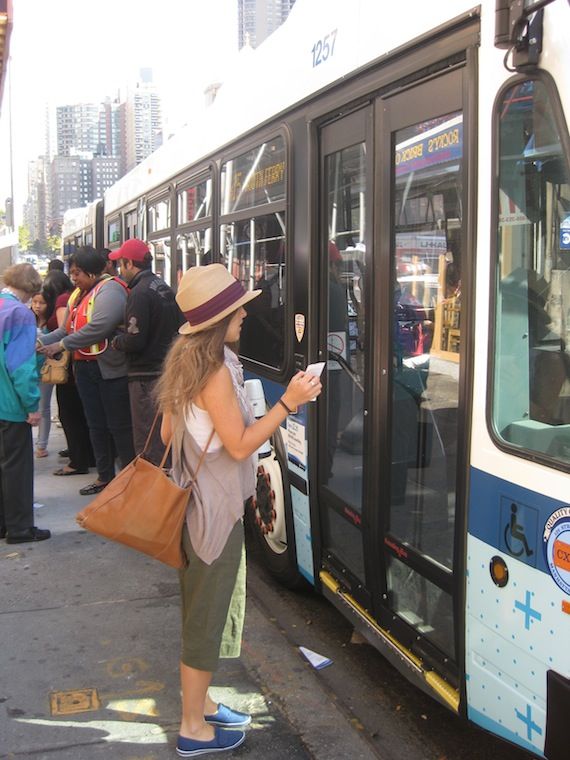
As Ben Kabak pointed out on Second Avenue Sagas this morning, the "media moment" of a new bus service's debut happens at the same time that riders are making their first adjustments to differences in their routine. Riders still lined up at the front door and sometimes entered at the middle of the bus. Only very rarely were all three doors employed. And despite the best efforts of the MTA staff on-site, one woman managed to break an off-board payment machine at 116th Street by trying to force her MetroCard into the receipt slot. These kinds of small inefficiencies are to be expected on the service's first weekday.
On a day like this, it's very easy to get quotes from New Yorkers who are skeptical of change. Almost every person I spoke with, for instance, complained that you wouldn't be able to run for the bus anymore, because you have to get your fare receipt first.
But paying fares before boarding will, overall, make Select Bus Service more attractive by shaving a lot of time off people's trips. We can't measure that effect on the first day or the first week of the new service, but the real success or failure of SBS on the East Side should be clear a few months from now, when we'll know how many more riders are opting for the M15 because it gets them where they want to go faster.
